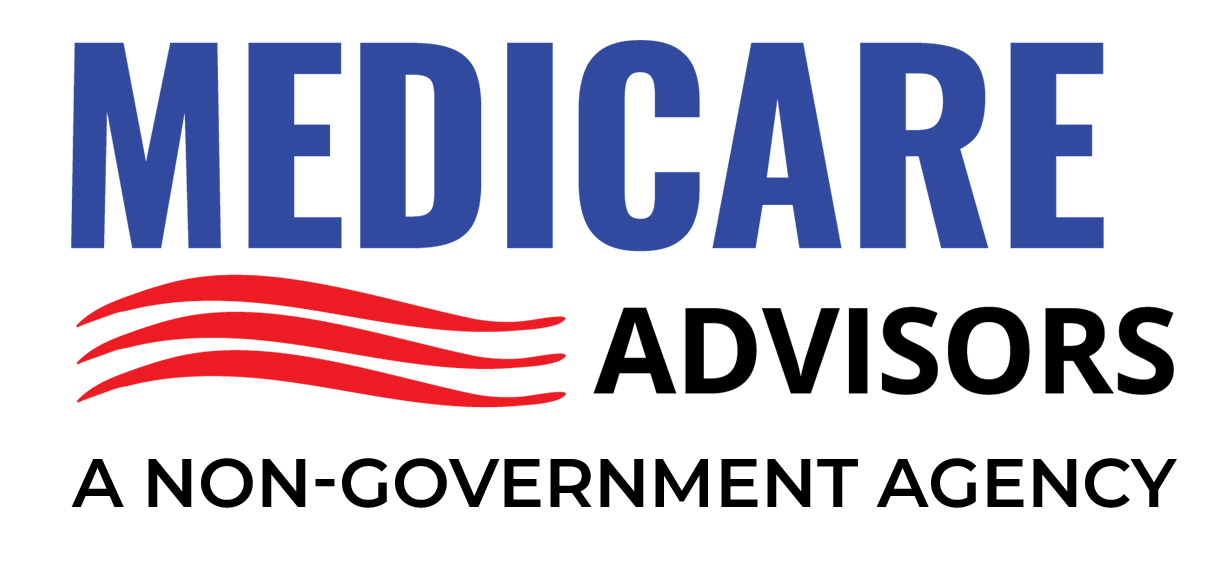Navigating the world of health insurance can be tough, especially when you’re managing limited income, disabilities, or chronic conditions. If you’re seeking comprehensive healthcare coverage, Dual Eligibility—qualifying for both Medicare and Medicaid—could be a significant step toward ensuring vital medical services without unbearable financial strain.
In the United States, Medicare is a federally administered health insurance primarily for individuals aged 65 or older, certain younger people with disabilities, and people with End-Stage Renal Disease (ESRD). On the other hand, Medicaid is a joint federal and state program offering health coverage to individuals and families with low income and resources. When someone meets the specific guidelines for both programs, they become what’s commonly referred to as “dual eligible.” As a dual-eligible beneficiary, you can reap the benefits of both Medicare and Medicaid. This partnership can lower or even eliminate out-of-pocket medical costs, making it a crucial lifeline for many Americans.
However, applying for dual Medicare and Medicaid can feel daunting. There are intricate rules about income, assets, eligibility deadlines, enrollment periods, and various state-specific guidelines. Understanding these regulations is key to ensuring you receive all the healthcare services and financial assistance you’re entitled to. In this comprehensive guide, we’ll break down how to apply for both Medicare and Medicaid step by step, highlight common pitfalls, and discuss ways to make the entire process simpler and more efficient.
To provide real-world insight, we’ve also included a professional perspective from Henry Beltran, the owner of Medicare Advisors, who shares his personal opinion based on decades of helping individuals find the right coverage. As you read, keep in mind that although this article aims to be thorough, it does not replace professional advice. Each person’s situation is unique, and state regulations can vary widely. Consulting with knowledgeable professionals, such as your State Health Insurance Assistance Program (SHIP) or an experienced Medicare and Medicaid counselor, can help you traverse these waters with confidence.
Understanding Dual Eligibility
What Is Medicare?
- Medicare Part A (Hospital Insurance): Covers hospitalization, skilled nursing facility care, hospice, and some home health services. Most beneficiaries get Part A premium-free if they or their spouse paid Medicare taxes while working.
- Medicare Part B (Medical Insurance): Covers doctor’s visits, outpatient care, medical supplies, and preventive services. There’s a monthly premium for Part B, which can vary based on income.
- Medicare Part C (Medicare Advantage): An alternative to Original Medicare (Parts A and B) offered by private insurance companies approved by Medicare. Often includes prescription drug coverage, vision, dental, and other benefits.
- Medicare Part D (Prescription Drug Coverage): Covers the cost of prescription medications. Offered by private insurers contracted with Medicare.
What Is Medicaid?
- Medicaid is need-based and serves low-income individuals, families, pregnant women, seniors, and people with disabilities.
- Administered at the state level but follows federal guidelines, so eligibility criteria vary by state.
- Covers a wide range of services, such as doctor visits, hospital stays, prescription drugs, preventive care, mental health services, and long-term care services in many cases.
Who Qualifies for Dual Eligibility?
Individuals who meet both Medicare’s criteria (age, disability, or condition) and Medicaid’s income/resource requirements may qualify for dual eligibility. While Medicare covers universal aspects (hospital, medical, possibly prescription drugs), Medicaid steps in to cover certain cost-sharing responsibilities like premiums, deductibles, and coinsurances—depending on the level of Medicaid assistance.
According to Henry Beltran, owner of Medicare Advisors:
“In my 20 years of practice, I’ve seen countless clients find relief through dual coverage. It can be life-changing, especially for those juggling high medical bills, medications, and limited incomes.”
Find Medicare Plans in 3 Easy Steps
We can help get up to $0 monthly premium Medicare plans
Potential Benefits of Dual Eligibility
- Reduced or Eliminated Premiums: Medicaid can often pay for Medicare Part B premiums (and sometimes Part A, if you don’t qualify for premium-free Part A).
- Lower Out-of-Pocket Costs: Dual eligibility can minimize or eliminate copayments, deductibles, and coinsurance for medical services.
- Additional Services: Medicaid may cover services not covered by Medicare, like some dental, vision, or long-term nursing home care.
- Prescription Savings: Many dual-eligible individuals automatically qualify for Extra Help with Medicare Part D, reducing prescription drug copays significantly.
Note: Benefits differ based on the state and your specific level of Medicaid coverage (e.g., QMB, SLMB, QI, QDWI). It’s critical to verify these details during application.
Step-by-Step: How to Apply for Dual Medicare and Medicaid
Step 1: Determine Your Basic Medicare Eligibility
- Age-Based: If you’re approaching 65 years old (or older), you may be eligible for Medicare.
- Disability: If you have a qualifying disability and have been receiving Social Security Disability Insurance (SSDI) for at least 24 months, you may be eligible for Medicare before 65.
- Specific Conditions: People with End-Stage Renal Disease (ESRD) or ALS (Lou Gehrig’s Disease) can qualify earlier.
You can check basic Medicare eligibility through:
- Social Security Administration (SSA): https://www.ssa.gov
- By phone at 1-800-772-1213 (TTY 1-800-325-0778).
Step 2: Verify Your State’s Medicaid Requirements
Each state has its own criteria related to:
- Income thresholds (monthly/annual)
- Asset limits (bank accounts, property, life insurance policies, etc.)
- Household size
- Special eligibility pathways for older adults, pregnant women, and people with disabilities
Helpful tip: Many states have expanded Medicaid coverage in recent years. Always check your state’s Medicaid website or contact your local human services office for the most accurate and up-to-date information.
Step 3: Submit Your Medicare Application
If you’re not automatically enrolled in Medicare (many people are, especially if they’re receiving Social Security benefits), you need to enroll:
- Online: Visit the Social Security Administration (SSA) website to apply.
- By Phone: Call the SSA directly.
- In Person: Visit your local Social Security office.
Required Documentation typically includes proof of:
- Age or identity (e.g., birth certificate, driver’s license)
- Citizenship status or legal residency
- Social Security number
Step 4: Apply for Medicaid Separately
Medicaid is a state-run program, so the application process varies:
- Online: Most states have an official website where you can create an account and fill out a Medicaid application.
- In Person: Visit your local state Medicaid office or Department of Human Services.
- By Mail: Some states allow you to print an application and mail it in.
Required Documentation often includes:
- Proof of income (recent pay stubs, Social Security benefit statements, etc.)
- Proof of assets (bank statements, property records, vehicle ownership, etc.)
- Identity and residency proof (driver’s license, state ID, utility bills, etc.)
Make sure to indicate during the application that you already have or are enrolling in Medicare, as this helps determine if you qualify for Medicare Savings Programs (QMB, SLMB, QI, QDWI) or other forms of cost-sharing assistance.
Step 5: Await Determination Letters
- Medicare Enrollment Confirmation: You’ll receive a Medicare card and an acceptance letter specifying your Parts A and B effective dates.
- Medicaid Decision: The state sends a determination letter, which outlines whether you’ve been approved or denied. If approved, it details coverage levels and program specifics.
Always keep these letters and cards in a safe place.
Step 6: Enroll in a Dual Eligible Special Needs Plan (D-SNP), If Desired
- A D-SNP is a type of Medicare Advantage plan tailored for individuals with both Medicare and Medicaid.
- It can combine Medicare Parts A, B, and D into one plan, often providing extra benefits like vision, hearing, or transportation services.
- Contact your state’s SHIP (State Health Insurance Assistance Program) or Medicare Advisors to learn more about which D-SNPs operate in your area and how to enroll.
Henry Beltran comments: “I often recommend D-SNPs to my clients who qualify for dual coverage. These plans are designed specifically for low-income seniors and disabled individuals. They can be a streamlined way to manage healthcare under one plan.”
Step 7: Maintain Eligibility and Renewal
- Medicare typically requires no annual renewal. Once enrolled, you remain covered unless you fail to pay Part B premiums (if applicable) or voluntarily cancel.
- Medicaid requires periodic renewals (often annually). Failing to renew or provide updated documentation can result in loss of coverage.
- Keep track of open enrollment periods if you want to switch or drop certain types of coverage, especially for Part D or Medicare Advantage.
Find Medicare Plans in 3 Easy Steps
We can help get up to $0 monthly premium Medicare plans
People Are Always Asking…
It’s common to feel overwhelmed by the process of applying for dual coverage. People are always asking about income thresholds, how state guidelines differ, or how to handle a denial. Here are some of the most pressing concerns:
- “How do I know if my income is too high or too low?”
Each state sets specific limits. You can often find these on your state’s Medicaid website or by contacting a local benefits counselor. Also, certain deductions (like medical expenses) may reduce your income for eligibility purposes. - “Can I apply for Medicaid first, then enroll in Medicare?”
Technically, yes, but you cannot reap the full benefits of dual coverage until you’re actively enrolled in Medicare Parts A and B. If you’re nearing 65 or have a qualifying disability, it’s wise to start your Medicare enrollment as soon as you’re eligible. - “I’m currently working part-time. Will that disqualify me?”
Not necessarily. Medicaid eligibility depends on total household income and certain disregards. Even part-time income may still fall within acceptable limits, especially if you have high medical expenses. - “Is it mandatory to join a Medicare Advantage plan if I’m dual eligible?”
No, you can keep Original Medicare and Medicaid. However, many dual-eligible individuals appreciate the extra benefits offered by Dual Eligible Special Needs Plans (D-SNPs), which can consolidate their coverage. - “What happens if my application is denied?”
You typically have a right to appeal. For Medicare, contact the Social Security Administration. For Medicaid, file a formal appeal with your state’s Medicaid agency. Provide any additional documentation that may clarify or rectify the denial reasons.
Potential Drawbacks and Considerations
While dual eligibility is often an excellent solution for those with limited incomes, it’s not without potential drawbacks:
- Administrative Complexity:
- Managing Medicare and Medicaid can be confusing. Each program has separate procedures, coverage rules, and renewal requirements.
- Tip: Keep a calendar of deadlines, renewal dates, and any relevant open enrollment periods.
- State-Specific Rules:
- Medicaid’s coverage can vary widely. Certain states are more generous than others.
- Tip: Review your state’s Medicaid manual or talk to a benefits counselor to understand coverage for services like dental or vision.
- Provider Acceptance:
- Not all providers accept Medicaid patients, even if they take Medicare.
- Tip: Make sure your preferred doctors accept both Medicare and Medicaid or ask about D-SNP networks.
- Limited Choice in Special Needs Plans:
- Depending on your location, the number of Dual Eligible Special Needs Plans might be limited, reducing your ability to shop around for the best plan.
- Tip: Compare plan benefits thoroughly before enrolling. Each D-SNP can differ in its provider network, prescription coverage, and extra services.
- Frequent Renewals and Potential Policy Shifts:
- Medicaid requires periodic re-evaluation of eligibility. Political or economic changes can also shift eligibility rules.
- Tip: Keep up to date with state legislature or any policy changes that might impact your coverage.
Despite these considerations, the advantages of dual eligibility often far outweigh the hurdles, especially for those who would otherwise struggle to afford healthcare.
Henry Beltran adds:
“The system can be confusing, but the benefits are worth the effort. I always tell my clients that being proactive about renewal deadlines and staying informed can protect them from coverage gaps.”
Frequently Asked Questions (F&Q)
1. What if I own a home? Will Medicaid automatically deny me?
Answer: Owning a primary residence often doesn’t disqualify you for Medicaid, especially if it’s your main residence. However, equity limits can apply in some states, and those states may place a lien on the property after your death to recover certain Medicaid expenses.
2. Do I need to apply for Supplemental Security Income (SSI) to get Medicaid?
Answer: Not always. Some states automatically grant Medicaid to individuals receiving SSI, but this is state-dependent. If you meet SSI requirements, you may automatically qualify for Medicaid in certain states.
3. How quickly does Medicaid coverage begin once approved?
Answer: In many states, coverage may be retroactive up to three months prior to the application month if you were otherwise eligible during that period. Check your state’s policies.
4. I’m approved for dual coverage. Can I see a specialist without a referral?
Answer: This depends on your plan type. If you have Original Medicare plus Medicaid, you typically don’t need referrals for specialists (as long as the specialist accepts Medicare). If you’re in a D-SNP or another managed care plan, you might need referrals.
5. How do I switch from one D-SNP to another?
Answer: Dual-eligible individuals generally have a Special Enrollment Period (SEP) that allows them to change plans more flexibly than others. However, the rules can change yearly, so confirm current guidelines on Medicare.gov or with a SHIP counselor.
Find Medicare Plans in 3 Easy Steps
We can help get up to $0 monthly premium Medicare plans
Real-World Reviews
Here are some real-world-style reviews (names changed for privacy) that reflect the experiences of individuals who pursued dual eligibility:
- Maria R. from Texas:
“After my stroke, my medical bills skyrocketed. I had Medicare Part A and B, but my prescriptions and rehab costs were out of control. Applying for Medicaid was a hassle, but once approved, it made a world of difference. My monthly premiums are now covered, and I can focus on recovery without worrying about mounting debt.” - John L. from Florida:
“I’m on disability and qualify for Medicare, but I could barely afford the Part B premium. When I found out I might get Medicaid, I hesitated because the process sounded scary. Luckily, I got help from a local counselor. Two months later, my Medicaid was approved, and they’re covering my Part B premium. I’m saving over a hundred dollars a month!” - Susan C. from New York:
“I was automatically enrolled in Medicare when I turned 65, but no one told me about Medicaid. I discovered I was eligible after a friend mentioned it. My biggest tip: Ask questions and don’t just assume you won’t qualify. It’s been a lifesaver for me financially.” - Trevor G. from Ohio:
“Applying for dual coverage wasn’t easy. I had to submit bank statements, tax returns, you name it. But once I got the hang of it, I realized how much I’d been missing out on. My advice? Keep a checklist of all required documents and call your state Medicaid office if you’re unsure.”
Expert Advice: Henry Beltran’s Personal Opinion
As the owner of Medicare Advisors, Henry Beltran has guided thousands of clients through the maze of federal and state health programs. Here is his personal opinion and advice based on years of professional experience:
“My motto is simple: Never assume you’re ineligible. I’ve met people who thought they earned too much or owned too many assets. But states have numerous allowances and special programs. If you have any suspicion that you might qualify, apply.
Another key tip is to remain organized—create a folder with all your income statements, Social Security benefits letters, rental agreements, bank statements, and medical bills. Keep digital or paper copies so you can easily access and submit them when required.
As for the real-life benefits, I’ve seen individuals who were forced to skip essential treatments because of cost, then get the help they needed once they gained dual eligibility. It’s heartening to see people get relief from the stress of medical bills.
Finally, don’t forget to renew. So many people lose coverage simply because they missed a renewal deadline. Put it on your calendar, or ask a family member or friend to help you remember. The peace of mind you get from knowing you’re covered is invaluable.”
Tips for a Smoother Application
- Get Pre-Screened: Use online eligibility checkers provided by many state Medicaid portals. This quick screening can tell you if you’re likely to qualify based on your income and family size.
- Organize Your Documents: Before applying, gather pay stubs, SSA award letters, IDs, and asset documents. Having everything on hand will speed up the process.
- Ask for Help: If the application is confusing, contact a counselor at your local SHIP or your state Medicaid office. They can guide you step by step.
- Watch for Scams: Be cautious of unsolicited calls asking for personal information. Official agencies rarely request sensitive data over the phone without prior contact.
- Keep Track of Changes: If your circumstances shift (job loss, inheritance, new health conditions), report these changes to Medicaid immediately. You might gain or lose eligibility.
Maintaining Coverage and Navigating Renewals
Medicaid Renewals
- Typically annual: You’ll receive a renewal notice, which you must fill out and return before the stated deadline. If you fail to comply, Medicaid coverage may terminate.
- Keep an eye on Mail & Email: Some states send renewal notices electronically. If you set up an online Medicaid account, make sure you check it regularly.
Medicare Considerations
- Part B Premiums: If Medicaid is paying these, you will see a $0 or reduced deduction from your Social Security check. If your Medicaid coverage lapses, you’ll be responsible for paying Part B premiums again.
- Prescription Drug Coverage: If you have a Part D or a D-SNP plan, watch out for annual plan changes in coverage or premiums. Dual-eligible individuals usually qualify for Extra Help, but you still need to verify your plan’s formulary if you take specific medications.
Reporting Changes Promptly
Any shifts in:
- Income
- Household size
- Address
- Disability status
must be reported to Medicaid and sometimes Social Security. Keeping these agencies informed helps prevent misunderstandings or coverage loss.
Final Thoughts
Securing dual Medicare and Medicaid eligibility is a powerful way to ensure you receive medical care without crippling expenses, especially when living on a fixed or limited income. The journey toward approval can be intricate—juggling documentation, understanding varied state regulations, and following strict enrollment windows—but the rewards are substantial.
As a Medicare Journalist, my hope is that this guide has demystified the process, providing a roadmap that you can reference at each stage. From verifying eligibility to submitting applications, dealing with potential drawbacks, and renewing coverage, a solid plan will help you navigate each requirement with confidence.
Remember, Henry Beltran put it best when he said:
“Never assume you’re ineligible. If in doubt, apply. Ask questions. Stay organized. The relief from medical cost burdens is priceless, and dual eligibility can offer just that.”
References
- Centers for Medicare & Medicaid Services (CMS). (2022). Medicare and You. Retrieved from https://www.medicare.gov
- Medicaid.gov. (2022). Medicaid Eligibility. Retrieved from https://www.medicaid.gov





